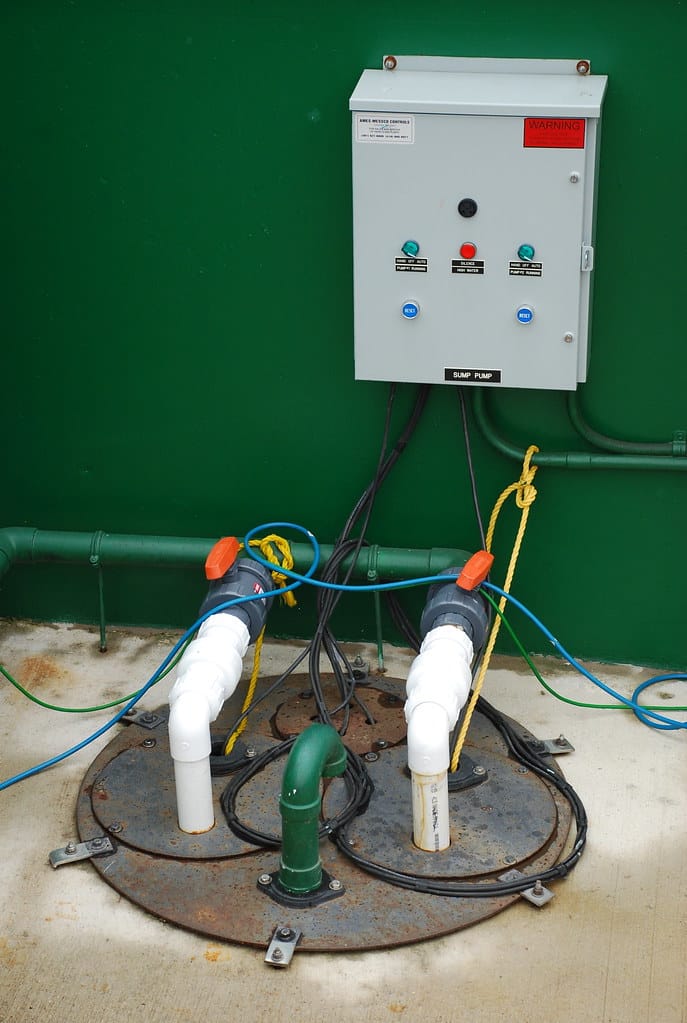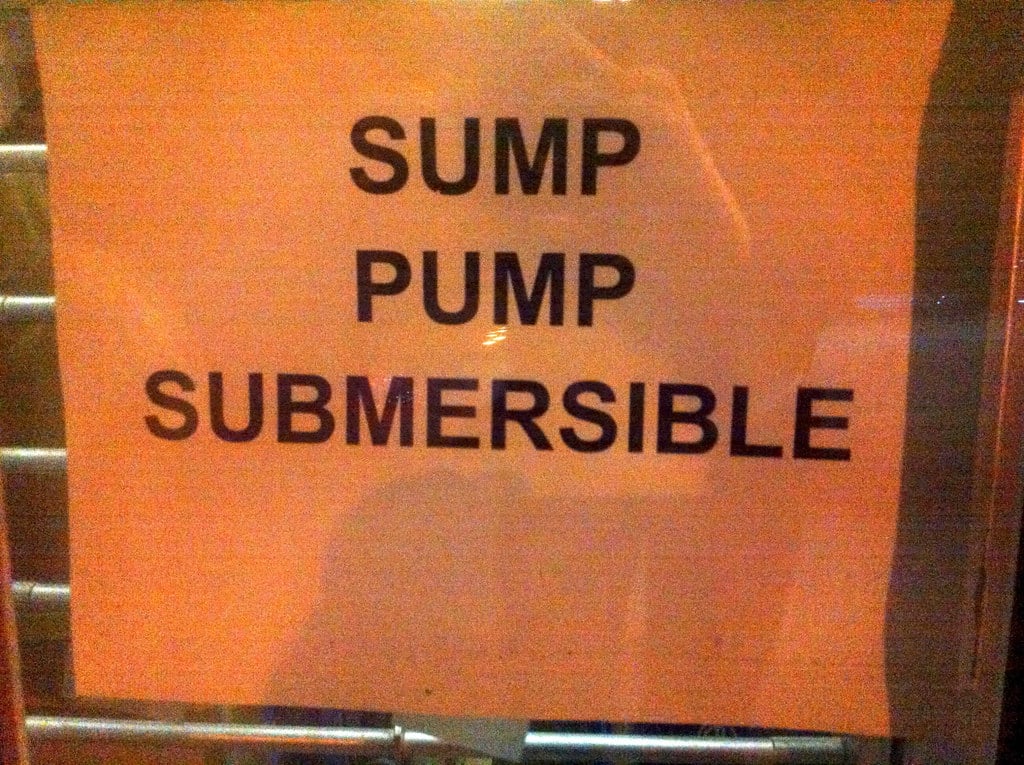What does a sump pump do? First, you need to know what exactly a sump pump is.
Your basement shouldn’t feel like a swimming pool after every heavy storm. If you’ve noticed standing water accumulation in your lower level or experienced the nightmare of a flooded basement, you’re likely wondering about sump pumps and how they work. These unsung heroes of home protection play a critical role in keeping your foundation dry and your property safe from water damage.
A sump pump is essentially your home’s first line of defense against basement flooding and excess water buildup. This mechanical guardian sits quietly in the lowest point of your basement or crawl space, ready to spring into action when water levels rise. By understanding what a sump pump does and how different systems work, you can make informed decisions about protecting your home from costly water damage.
This comprehensive guide will walk you through everything you need to know about sump pump systems. You’ll discover the various types available, learn how installation works, and understand when you might need a backup system. Whether you’re dealing with a high water table, frequent storms, or simply want to protect your investment, this information will help you choose the right flood prevention solution for your home.

“Sump pump in photographer’s well” by afagen is licensed under CC BY-NC-SA 2.0
How Sump Pumps Work to Protect Your Home
Sump pump systems operate on a straightforward but effective principle: detect water accumulation and remove it before it becomes a problem. The process begins in the sump basin, also called a sump pit, which is installed at the lowest point of your basement floor. This strategic placement ensures that any water that enters your basement naturally flows toward this collection point.
When groundwater seeps through your foundation or water accumulation occurs due to heavy rainfall, it collects in the sump basin. As water rises in the pit, a float switch or pressure sensor detects the increasing water level. Once the water reaches a predetermined height, the switch activates the pump motor.
The pump then draws water from the sump pit and pushes it through a discharge pipe that directs the water away from your home’s foundation to a designated drainage area. This continuous cycle prevents water from reaching levels that could flood your basement or damage your foundation. A properly functioning system can move hundreds of gallons per hour, keeping pace with even heavy water infiltration.
Most sump pump systems include a check valve on the discharge line, which prevents water from flowing back into the pit when the pump shuts off. This small but crucial component ensures the system functions properly and doesn’t waste energy by re-pumping the same water repeatedly.

Primary Types of Sump Pumps: Submersible vs Pedestal
Understanding the different types of sump pumps helps you choose the best system for your specific needs and basement configuration. The two main categories are submersible sump pumps and pedestal sump pumps, each with distinct advantages and applications.
Submersible Sump Pumps
Submersible pumps represent the most popular choice for residential installations. These units sit entirely within the sump basin, with the motor mounted inside a waterproof housing. When water rises, the entire pump becomes submerged, hence the name.
The design offers several benefits. Since the motor sits below water level during operation, submersible pumps run more quietly than their pedestal counterparts. The water surrounding the motor also provides natural cooling, which can extend the pump’s lifespan. Additionally, because the entire unit fits within the pit, submersible systems take up less visible space in your basement.
Submersible sump pumps typically handle higher volumes of water and can operate more efficiently in deeper sump pits. They’re also less likely to clog since debris that might interfere with pump operation tends to settle at the bottom of the pit, away from the intake.
Pedestal Sump Pumps
Pedestal sump pumps feature a different design approach. The motor sits on a pedestal above the sump pit, connected to an impeller at the bottom of the basin through a long shaft. This configuration keeps the motor completely out of the water.
The elevated motor design makes pedestal pumps easier to access for maintenance and repairs. You can inspect, service, or replace the motor without removing it from the pit. Pedestal pumps also tend to cost less initially and may last longer since the motor never comes into contact with water.
However, pedestal sump pumps operate more loudly than submersible models because the motor isn’t cushioned by water. They also require more vertical clearance in your basement and may not be suitable for all pit configurations.
Essential Components of Sump Pump Systems
A complete sump pump system involves more than just the pump itself. Understanding these components helps you appreciate how the system works together to protect your home from water damage.
Sump Basin and Installation
The sump pit forms the foundation of your entire system. Professional installation typically involves excavating a hole in your basement floor at the lowest point, where water naturally collects. The basin must be properly sized to hold adequate water volume while allowing the pump to cycle efficiently.
Proper pit installation includes a gravel base for drainage and a sealed lid to prevent debris from entering the system. The pit should also be positioned to intercept water from your foundation’s perimeter drainage system if one exists.
Float Switch and Activation Systems
The float switch serves as the brain of your sump pump system. This device monitors water levels and signals when the pump should start and stop. Traditional vertical float switches rise with water levels, triggering the pump when they reach a specific height.
More advanced systems may use pressure sensors or electronic switches that provide more precise control and can detect rising water levels more quickly. Some modern systems even include multiple switching mechanisms for added reliability.
Discharge Pipe and Drainage
The discharge line carries water away from your home’s foundation to prevent it from simply flowing back toward your basement. Proper discharge pipe installation requires careful consideration of drainage patterns and local regulations.
The discharge point should be far enough from your foundation to prevent water from seeping back through the soil. Many installations include a discharge line that connects to storm drains or directs water to areas where it can safely infiltrate the ground without affecting your home or your neighbors’ properties.

“Sump Pump Size” by Water Damage Defense is licensed under CC BY 2.0
When You Need a Backup Sump Pump System
Your primary pump works well under normal conditions, but what happens when the power goes out during a major storm? This scenario occurs more frequently than many homeowners realize, which is why backup sump pump systems have become increasingly popular.
Battery Backup Systems
A battery backup sump pump provides protection when your primary pump fails or loses power. These systems use a separate pump powered by a marine-grade battery that can operate for several hours during power outages.
Battery backup systems typically include audible alarms that alert you when the backup pump is running or when the battery needs attention. Many modern backup pumps also feature smart monitoring capabilities that can send alerts to your smartphone.
The backup pump usually has a lower capacity than your primary pump, but it provides essential protection during the critical hours when storms are most severe and power is most likely to be interrupted.
Water-Powered Backup Pumps
Some areas with adequate water pressure can benefit from water-powered backup pumps. These systems use your home’s water pressure to create suction that removes water from the sump pit. While they don’t require electricity or batteries, they do increase your water bill and require sufficient municipal water pressure to operate effectively.
Why Backup Systems Matter
Storm events that threaten your basement often coincide with power outages. Heavy rain, flooding, and severe weather can knock out electrical service just when you need your sump pump most. A backup system ensures continuous protection regardless of power availability.
Additionally, mechanical components can fail. Even the most reliable primary pump may experience motor problems, switch malfunctions, or clogs that prevent proper operation. Having a backup system means you’re protected even if your main pump encounters issues.
Professional Installation vs DIY Considerations
Sump pump installation involves several technical considerations that affect both performance and safety. While some homeowners tackle this project themselves, professional installation often provides better long-term results.
Professional Installation Benefits
Licensed plumbers bring expertise in local building codes, proper pit sizing, and sump pump discharge requirements. They understand how to integrate sump pump systems with existing drainage and can identify potential issues before they become problems.
Professional installation also typically includes permits and inspections where required, ensuring your system meets local regulations. Many contractors offer warranties on their work, providing additional peace of mind.
Critical Installation Factors
Proper installation requires careful attention to several factors. The sump pit must be positioned correctly and sized appropriately for your basement sump pump drainage patterns. The discharge pipe needs proper grading and should include a check valve to prevent backflow.
Electrical connections must meet local codes and should include a dedicated circuit breaker for the pump. GFCI protection is typically required for safety, and the electrical connection should be positioned to avoid contact with water.
Maintenance and Troubleshooting Your Sump Pump
Regular sump pump maintenance keeps your sump pump functioning properly when you need it most. A few simple steps can prevent costly failures and extend your system’s lifespan.
Routine Maintenance Tasks
Test your pump regularly by pouring water into the pit until the float switch activates. The pump should start quickly, remove water efficiently, and shut off when levels drop. Listen for unusual noises that might indicate motor problems or obstructions.
Check the discharge pipe periodically to ensure it’s clear of debris and ice during winter months. Clean the sump pit annually, removing any accumulated sediment or debris that could interfere with pump operation.
Inspect your backup battery if you have a battery backup system. Most backup systems include testing features that verify battery condition and pump operation.
Common Issues and Solutions
If your pump cycles frequently, the pit might be too small, or the pump might be undersized for your needs. Continuous running often indicates a malfunctioning float switch or a pump that’s struggling to keep up with water infiltration.
Strange noises might indicate debris in the impeller or motor problems that require professional attention. If the pump fails to start, check the circuit breaker and examine the float switch for obstructions.
Choosing the Best Sump Pump for Your Home | What Does A Sump Pump Do?
Selecting the right sump pump involves evaluating your specific needs, basement characteristics, and local conditions. Consider your typical water infiltration patterns, the size of your basement, and whether you’ve experienced flooding before.
Higher horsepower pumps can move more water but consume more energy. Consider the typical volume of water your system needs to handle and choose a pump with adequate capacity plus some safety margin.
Factor in noise levels if your basement serves as living space. Submersible pumps generally operate more quietly than pedestal models. Also consider the availability of backup power options and whether your local water pressure supports water-powered backup systems.

Protecting Your Investment with Professional Services At G.A. Eberly Plumbing & Heating
Your sump pump system represents a critical investment in protecting your home’s foundation and preventing costly water damage. Regular professional service ensures your system operates reliably when severe weather strikes.
Professional technicians can identify potential issues before they become emergencies, adjust system settings for optimal performance, and recommend upgrades when your needs change. They can also help you understand how your system integrates with other aspects of your home’s drainage and waterproofing.
Don’t wait until the next major storm to discover your sump pump isn’t working properly. Schedule regular inspections and maintenance to keep your system ready for whatever weather conditions come your way.
For expert sump pump installation, maintenance, and repair services in the DMV area, contact G.A. Eberly Plumbing & Heating at 301-856-6900. Our experienced team can help you choose the right system for your home and ensure it’s installed correctly to provide years of reliable flood protection.

